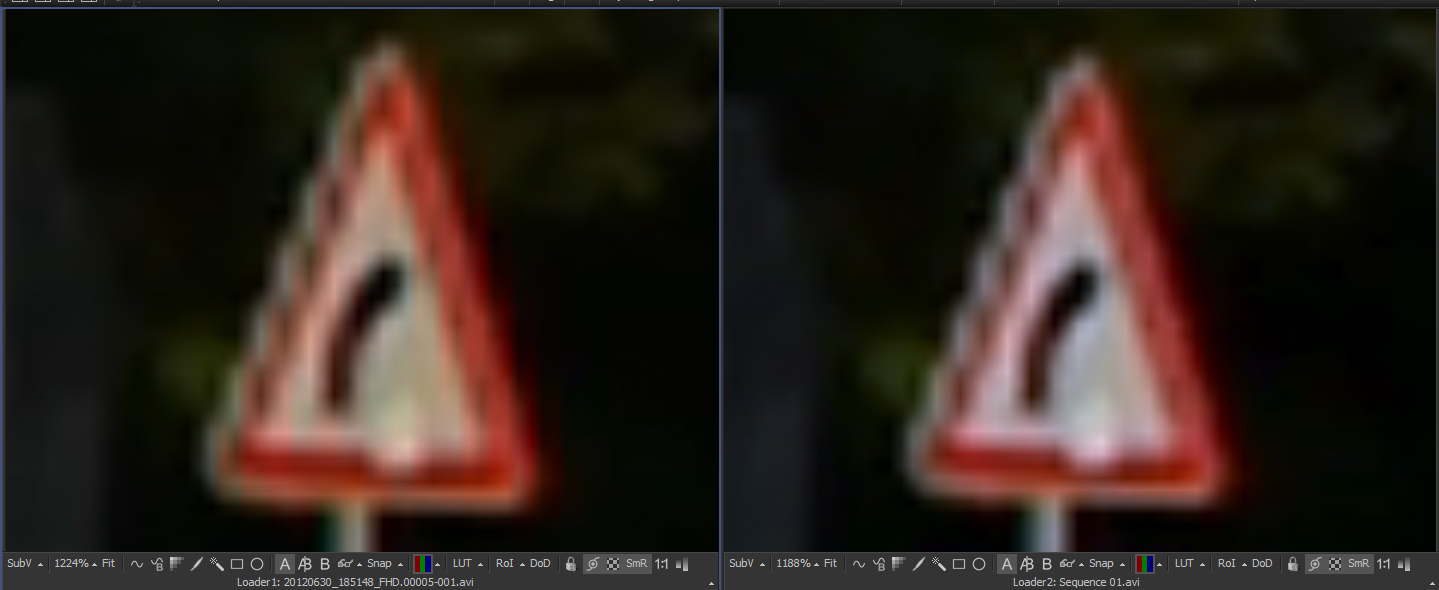
-
Grass Valley have made their codecs, including Canopus HQ and HQX free to non-Grass Valley users.
It should be a good free option to DNxHD, Cineform etc. as a near-lossless intraframe codec.
Limitations: Windows 7 is required and also registration on the GV site.
Here the download page:
http://www.grassvalley.com/support/downloads/products?product=&download=625
Here some discussion on the topic:
http://www.sonycreativesoftware.com/forums/ShowMessage.asp?ForumID=4&MessageID=818496
Free codec release came with the new Edius 6.5 release:
EDIUS Pro 6.5 include:
Color correction tool supports 10-bit color depth Export sequence with alpha channel Native RED (.R3D) support* Improved XDCAM/ P2 data transfer 3D (stereoscopic) editing AVCHD 2.0 support EOS movie support (ALL-I (I-only), IPB) Camera RAW format support* Filmstrip view in Timeline Enhanced video layouter (drop shadow, resize quality) Built-in loudness meter Built-in shake stabilizer 720p Blu-ray authoring support Flash F4V export QuickTime HQ/HQX codec (Windows/Mac) -
Yes. You may not notice the difference in one or two generations, but go more and the superiority of Canopus HQX is obvious. By coincidence, last week I did a 10 generation test of Canopus HQX (highest quality setting) on a very demanding 3D computer graphic render. I was absolutely thrilled with the result. This is the only codec other than lossless, that I feel confident to use for multi-generational post work.
-
Downloaded these ones will try them on AVCHD. These are not able to do video of resolution above 1080p (like 4000x3000). I need it for timelapse photography first video from photos, so that it would be possible to crop and resize it in editor in next step. Right now I'm using Lagarinth witch is better than Uncompressed RGB, but loosing some more of those GB would be great.
-
I had a go with this codec last night, using win 7 / vegas pro 11. For some reason Vegas didn't like wrapping (if that's the correct term) HQX in .mov and wouldn't render at all (or keep the settings). But it was very happy in .avi and seemed to play very smoothly. I also used it to render something out of Vegas and into Speedgrade and back, and it seemed to be happy about that.
-
They are maybe the best codecs out there. A lot of people report they are better than Cineform.
-
As you've discovered, Quicktime on a PC adds a layer of complexity that degrades playback performance. Given a choice, avi is the way to go.
-
@Ralph_B @nomad Well, bugger me. Thanks to your comments, I think I'm starting to understand this codec / wrapper thing. And just took one of the .avi files I created using HQX and renamed it with a .mov extension and yes, it still plays. So I can just use whatever my machine (in my case a pc so I use .avi) most likes, and then it will still be able to be shared on a mac or anything else that uses .mov files as long as they have the codec installed? Is that basically it? Or is it a lot more complicated than that?
-
@Mark_the_Harp just renaming it does no change the container. i am sure the player you used detected that it's not a mov container but an avi, and disregarded the extension and internally played it using an avi container demultiplexer. changing the container means taking the content out of the e.g. avi box and putting in the mov box, which has different size, lid and handles than avi (but your content is unchanged)
if you want to actually change containers you can use Mpeg_streamclip: open avi and save as (not export as) mov. likewise you can use the command line ffmbc as described in method 5 on this page: http://lightworks.wikidot.com/avchd-workflow (only you choose avi input file and mov extension or viceversa)
You need to have codecs for both avi and QT in order to be able to switch containers and still be able to play the file
-
kankala's comments are right on the money.
-
Its only 4:2:2 chroma sampling :(
-
why dont you than grade original footage? 422vs444(with interpolation)


 422444.jpg1439 x 590 - 226K
422444.jpg1439 x 590 - 226K -
You dont get banding because gradin 422 or 420,you get it because of 8bit depth,you get blocky artifatcs like on picures above on red and blue channel,but never mind if it is ok with you it is ok with me,peace bro
Howdy, Stranger!
It looks like you're new here. If you want to get involved, click one of these buttons!
Categories
- Topics List24,098
- Blog5,725
- General and News1,403
- Hacks and Patches1,153
- ↳ Top Settings33
- ↳ Beginners256
- ↳ Archives402
- ↳ Hacks News and Development56
- Cameras2,401
- ↳ Panasonic995
- ↳ Canon118
- ↳ Sony156
- ↳ Nikon96
- ↳ Pentax and Samsung70
- ↳ Olympus and Fujifilm102
- ↳ Compacts and Camcorders300
- ↳ Smartphones for video97
- ↳ Pro Video Cameras191
- ↳ BlackMagic and other raw cameras149
- Skill1,960
- ↳ Business and distribution66
- ↳ Preparation, scripts and legal38
- ↳ Art149
- ↳ Import, Convert, Exporting291
- ↳ Editors191
- ↳ Effects and stunts115
- ↳ Color grading197
- ↳ Sound and Music280
- ↳ Lighting96
- ↳ Software and storage tips266
- Gear5,420
- ↳ Filters, Adapters, Matte boxes344
- ↳ Lenses1,582
- ↳ Follow focus and gears93
- ↳ Sound499
- ↳ Lighting gear314
- ↳ Camera movement230
- ↳ Gimbals and copters302
- ↳ Rigs and related stuff273
- ↳ Power solutions83
- ↳ Monitors and viewfinders340
- ↳ Tripods and fluid heads139
- ↳ Storage286
- ↳ Computers and studio gear560
- ↳ VR and 3D248
- Showcase1,859
- Marketplace2,834
- Offtopic1,343





